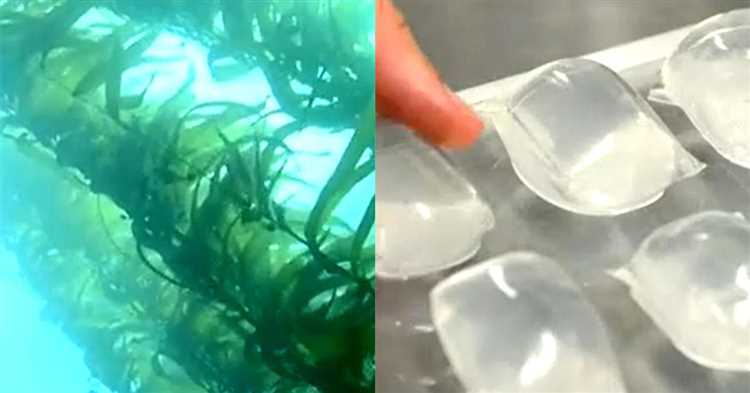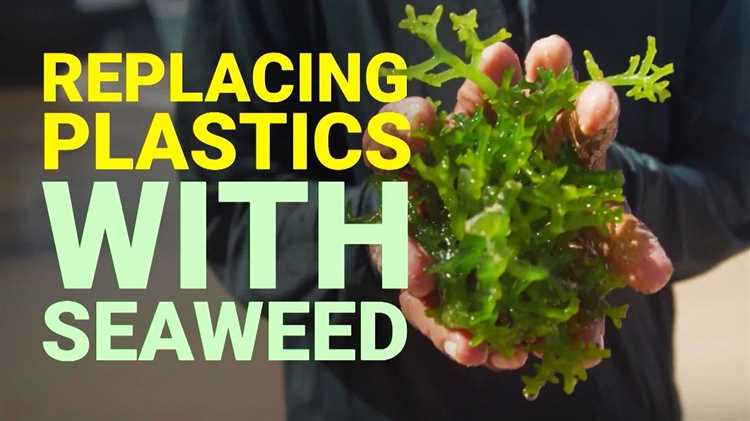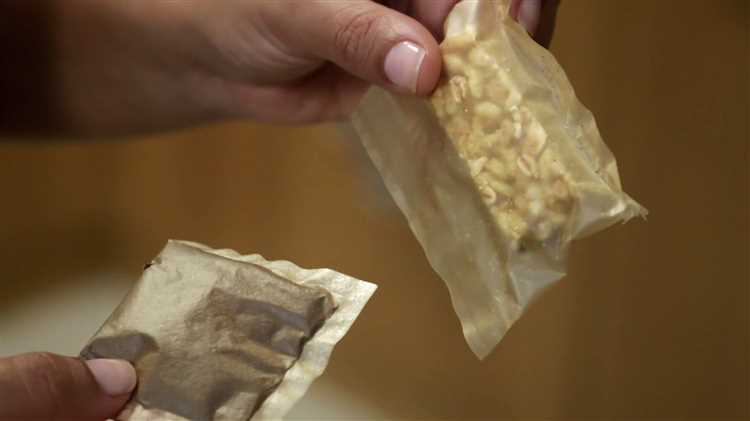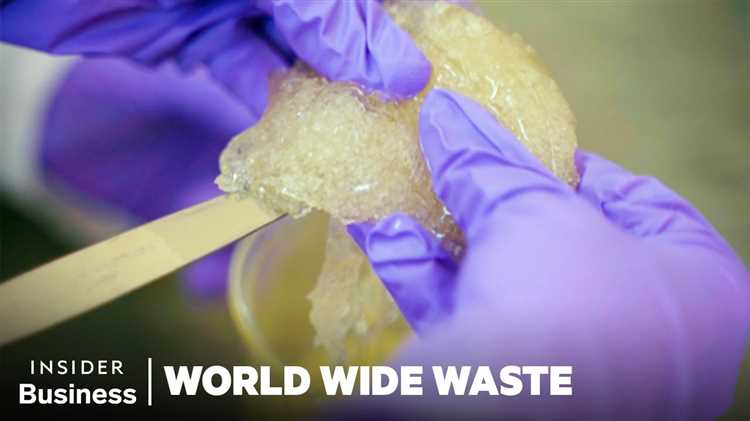In recent years, the plastic pollution crisis has gained a lot of attention and people are starting to realize the urgent need for finding more sustainable alternatives. One potential solution that has been gaining traction is seaweed. Seaweed, a type of marine algae, has shown great promise as a replacement for plastic in various applications.
Seaweed is a renewable resource that grows abundantly in oceans and doesn’t require land, freshwater, or fertilizers to grow. It can be harvested without causing any harm to the environment, as it can quickly regrow and doesn’t contribute to deforestation or habitat destruction like traditional plastic production does. This makes it an attractive option for those looking to reduce their ecological footprint.
Furthermore, seaweed-based materials have the potential to biodegrade much faster than traditional plastics. While plastic can take hundreds of years to break down, seaweed-based materials can decompose within months, or even weeks, depending on the specific conditions. This means that if seaweed were to replace plastic, it would significantly reduce the amount of waste that ends up in landfills or oceans, helping to mitigate the environmental impact of plastic pollution.
Not only is seaweed a sustainable alternative to plastic, but it also has various other benefits. It can be used in a wide range of applications, from food packaging and single-use items to textiles and even construction materials. Seaweed-based materials have been found to be strong, flexible, and resistant to moisture, making them suitable for many different purposes. Additionally, seaweed contains natural antimicrobial properties, which could make it particularly useful in the healthcare industry.
While seaweed shows great promise as a sustainable alternative to plastic, there are still challenges that need to be addressed. Scaling up seaweed production and developing efficient extraction methods are some of the key obstacles that researchers are working to overcome. Nonetheless, with ongoing advancements in technology and growing awareness of the negative impacts of plastic, it is hopeful that seaweed will play a significant role in reducing plastic pollution and creating a more sustainable future.
- Benefits of Using Seaweed
- Challenges in Replacing Plastic with Seaweed
- Seaweed-Based Packaging Solutions
- Biodegradability and Environmental Impact
- The Potential of Seaweed-based Materials
- Questions and answers:
- Is seaweed a sustainable alternative to plastic?
- How is seaweed used as a replacement for plastic?
- What are the advantages of using seaweed as a sustainable alternative to plastic?
- Are there any challenges or limitations to using seaweed as a replacement for plastic?
Benefits of Using Seaweed

Seaweed represents a promising alternative to plastic due to its numerous benefits. Here are some of the advantages of using seaweed:
1. Renewable and Sustainable: Seaweed is a renewable resource that can be grown and harvested without consuming excessive amounts of water, land, or energy. It can be cultivated on coastlines around the world, making it a sustainable option for reducing our dependence on non-renewable resources.
2. Biodegradable: Unlike plastic, seaweed is biodegradable and can naturally decompose in the environment. This helps to prevent the accumulation of waste and the pollution of our oceans, rivers, and landfills.
3. Carbon Capture: Seaweed has the ability to absorb and store large amounts of carbon dioxide from the atmosphere, acting as a natural carbon sink. By utilizing seaweed, we can reduce greenhouse gas emissions and combat climate change.
4. Versatility: Seaweed can be used in a variety of applications, such as packaging materials, food additives, biofuels, and even clothing. Its adaptable nature makes it a valuable resource for creating sustainable alternatives to plastic in various industries.
5. Rich in Nutrients: Seaweed is a nutritious source of vitamins, minerals, antioxidants, and other beneficial compounds. Incorporating seaweed into products can provide additional health benefits to consumers.
6. Economic Opportunities: The cultivation and processing of seaweed can create new economic opportunities for coastal communities. It can provide jobs, income, and promote sustainable economic development.
Overall, the use of seaweed offers a range of benefits that make it an attractive and sustainable alternative to plastic. By embracing this natural resource, we can contribute to a cleaner environment and a more sustainable future.
Challenges in Replacing Plastic with Seaweed
1. Limited Availability:
One of the main challenges in replacing plastic with seaweed is the limited availability of seaweed resources. Although seaweed is abundantly found in oceans and seas, the availability of sustainable and reliable seaweed sources for large-scale production is still a challenge. Additionally, the harvesting and cultivation of seaweed require specific conditions and techniques, which adds to the complexity of seaweed-based production.
2. Processing and Cost:
The processing methods required to convert seaweed into a usable material for replacing plastic can be costly and time-consuming. Seaweed needs to be dried, purified, and processed into a suitable form before it can be used as a replacement for plastic. These additional processing steps can increase the overall production costs and make seaweed-based products less economically viable compared to conventional plastic alternatives.
3. Durability and Performance:
Another challenge in replacing plastic with seaweed is achieving comparable durability and performance properties. Plastic is known for its strength, flexibility, and ability to withstand various environmental conditions. Seaweed-based materials may not possess the same level of durability or performance, making it difficult to replace plastic in applications that require high-strength materials or resistance to extreme temperatures.
4. Consumer Perception and Acceptance:
Changing consumer perceptions and acceptance of seaweed-based products can also pose a challenge in transitioning from plastic to seaweed. Plastic has been widely used and accepted in various industries for decades, and convincing consumers to switch to an alternative material may require education, awareness campaigns, and product demonstrations to highlight the benefits and potential of seaweed-based products.
5. Recycling and Disposal:
The recycling and disposal of seaweed-based products can present logistical challenges. While seaweed is a natural material that can biodegrade, the infrastructure and processes for the collection and composting of seaweed-based products may not be widely available. Developing efficient and environmentally-friendly recycling and disposal methods for seaweed-based products is essential to ensure they have a minimal impact on the environment.
6. Regulatory Framework:
The development and adoption of regulations and standards for seaweed-based products is crucial for their successful integration into the market. Ensuring the safety, quality, and compliance of seaweed-based materials through appropriate regulations can help build consumer trust and facilitate the widespread adoption of these sustainable alternatives to plastic.
In conclusion, while seaweed shows promise as a sustainable alternative to plastic, there are several challenges that need to be addressed. These include limited availability, processing and cost concerns, durability and performance issues, consumer perception, recycling and disposal logistics, and the establishment of a regulatory framework. Overcoming these challenges will be essential in successfully replacing plastic with seaweed and creating a more sustainable future.
Seaweed-Based Packaging Solutions

The growing global concern over plastic pollution has led to a search for more sustainable alternatives. Seaweed-based packaging has emerged as a promising solution that offers several benefits.
Seaweed, a type of marine algae, is a renewable resource that can be harvested and grown without the need for fertilizers, land, or fresh water. It is abundant in oceans around the world and grows rapidly, making it an ideal raw material for packaging.
One of the key advantages of seaweed-based packaging is its biodegradability. Traditional plastic, made from fossil fuels, can take hundreds of years to decompose. In contrast, seaweed-based packaging can break down naturally within weeks or months, significantly reducing its impact on the environment.
Furthermore, seaweed-based packaging is edible and safe for consumption. This unique characteristic eliminates the need for separate disposal processes, as the packaging can be consumed along with the food it contains. This not only reduces waste but also provides additional nutritional benefits.
In addition to its environmental advantages, seaweed-based packaging is also flexible, lightweight, and has good moisture barrier properties. These traits make it suitable for various packaging applications, including food packaging, cosmetics, and personal care products.
Several companies and researchers around the world are actively working to develop and implement seaweed-based packaging solutions. They are exploring different manufacturing techniques and formulations to ensure the packaging is durable, cost-effective, and meets all necessary regulatory requirements.
While there are still challenges to overcome, such as scalability and standardization, seaweed-based packaging holds immense potential as a sustainable alternative to traditional plastic. As more research and development efforts continue, it is expected that seaweed-based packaging will become more widely adopted and contribute to a greener future.
Biodegradability and Environmental Impact

One of the main advantages of seaweed-based products over traditional plastic is their biodegradability. Seaweed is a natural material that can be broken down by microorganisms, making it a much more sustainable option for packaging and other applications.
When plastic products are discarded, they can take hundreds of years to decompose, causing significant environmental harm. In contrast, seaweed-based materials can biodegrade in a matter of months, minimizing their impact on the planet. This means that if seaweed-based packaging ends up in the ocean or in landfills, it will naturally break down without leaving harmful microplastics behind.
In addition to their biodegradability, seaweed-based materials also have a lower carbon footprint compared to traditional plastic. Seaweed farms can actually absorb carbon dioxide from the atmosphere, helping to mitigate climate change. Furthermore, the cultivation of seaweed requires minimal resources such as water and land, making it a more sustainable option.
The Potential of Seaweed-based Materials

The use of seaweed-based materials has the potential to revolutionize the packaging industry and significantly reduce plastic pollution. With the increasing global awareness of the importance of sustainability, many companies are exploring the use of seaweed as an alternative to traditional plastic.
Seaweed-based materials can be used not only for packaging but also for a wide range of other applications, including disposable cutlery, straws, and even clothing. By replacing plastic with seaweed, we can minimize the environmental impact of these products and contribute to creating a more sustainable future.
Conclusion:
Seaweed-based materials offer a promising solution to the plastic pollution problem. Their biodegradability, lower carbon footprint, and versatility make them a sustainable alternative worth exploring. By embracing seaweed-based products, we can reduce the reliance on traditional plastic and shift towards a more environmentally friendly and sustainable society.
Questions and answers:
Is seaweed a sustainable alternative to plastic?
Yes, seaweed is considered to be a sustainable alternative to plastic. It is biodegradable, renewable, and can be grown without the use of chemicals or large amounts of freshwater.
How is seaweed used as a replacement for plastic?
Seaweed can be used to create various bioplastics, packaging materials, and even edible alternatives to plastic. It can be processed into a gel-like substance, which can then be molded into different shapes and forms.
What are the advantages of using seaweed as a sustainable alternative to plastic?
There are several advantages to using seaweed as a sustainable alternative to plastic. Firstly, it is biodegradable, meaning it will break down naturally in the environment without causing long-term harm. Seaweed is also renewable, as it can be grown and harvested in large quantities. Additionally, seaweed does not require the use of chemicals or large amounts of freshwater, making it an environmentally friendly option.
Are there any challenges or limitations to using seaweed as a replacement for plastic?
While seaweed shows great potential as a sustainable alternative to plastic, there are still some challenges and limitations to overcome. One challenge is the scalability of seaweed production. Currently, seaweed is not produced on a large enough scale to fully replace plastic. Another limitation is the cost of production, as seaweed-based products can be more expensive than traditional plastic alternatives. However, ongoing research and innovation are being done to address these issues and make seaweed-based materials more accessible.